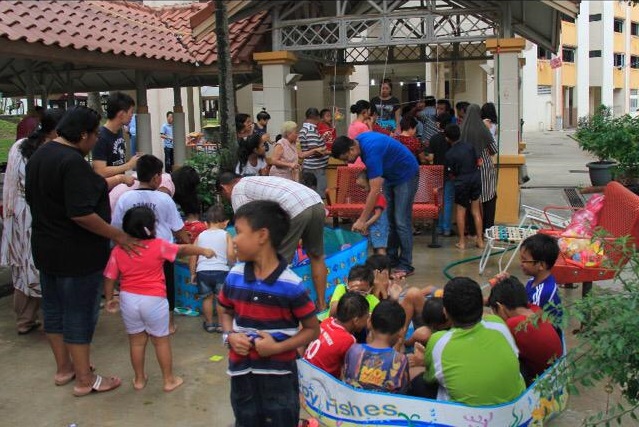We often talk about “kampung spirit” – that bond you have with people close to you, both by proximity and personal ties.
It harkens to a simpler time in the 60s and 70s when most Singaporeans stayed in villages, or kampungs, where life was lived with neighbours and friends, without devices like computers or mobile phones to distract. That led to strong bonds between people, regardless of culture or background.
Unfortunately, as villages made way to HDB estates, this closeness had faded by the time I was born. Thus, depictions in the media and stories from my elders were the only way I got to imagine what life was like back then. I thought that I would never get a taste of the fabled “kampung spirit”.
Until I visited Bedok Reservoir.
It started with a search
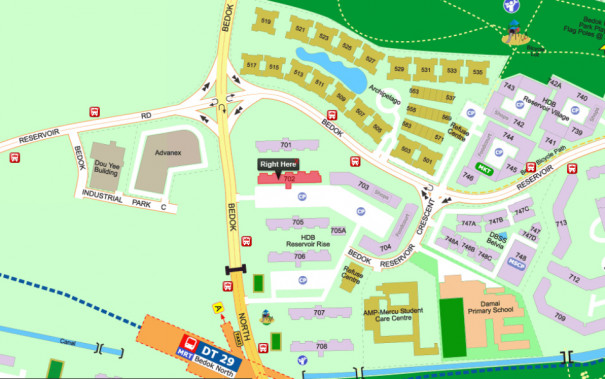
Let me start at the beginning.
It was a Wednesday morning. A colleague and I were on a search for someone named Sandy Goh at Bedok Reservoir housing estate. We heard that she was organising volunteers to help distribute donated items to the needy in her neighbourhood and surrounding areas.
I wanted to hear her story – how often do you know of such generous neighbours, doing such work on their own time? But other than a name and a place, we knew nothing of her: We were going in completely blind.
We started our search outside of a provision shop. We asked the cashier if he knew Sandy or any of her volunteers. He said he knows a volunteer’s daughter, Karen, who works at the clinic next door.
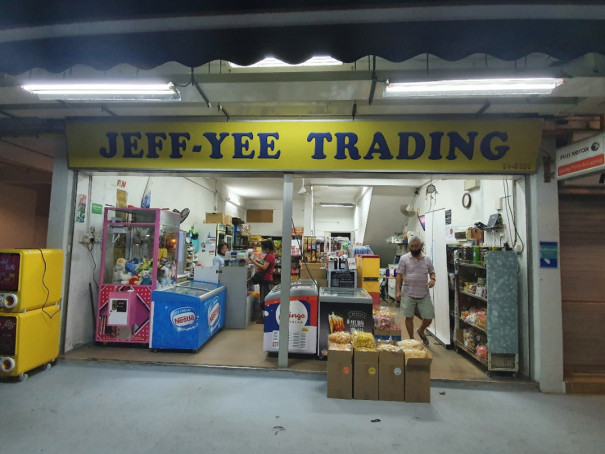
At the clinic, after we introduced ourselves, Karen called Sandy. She couldn’t reach her but gave us her contact.
I was surprised to get hold of Sandy’s number so quickly! And I was amazed at how everyone we talked to seemed to know each other.
Karen told us: “I prefer to stay at home. But after my mother started volunteering at Sandy’s events, I started to accompany her and now I go out more often. Sandy really made the neighbourhood feel more together. Everyone knows each other and is very close with each other.”
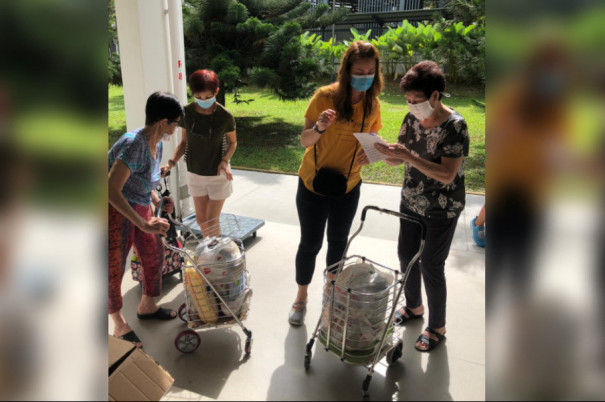
Karen’s two sons, who are Primary 1 and Primary 6, also reflect the sense of kampung-ness of the area.
“I have to make sure that I don’t take my kids to (Block 702) during weekdays. Only on the weekend. Otherwise they will have so much fun with the other children there that they won’t leave. Then they will be late for dinner and for getting ready for the next school day,” she explains.
“Everyone here knows my children… My younger one likes to run around and gets lost when I go grocery shopping. But I don’t have to worry because I can just ask around and people will know where he is.”
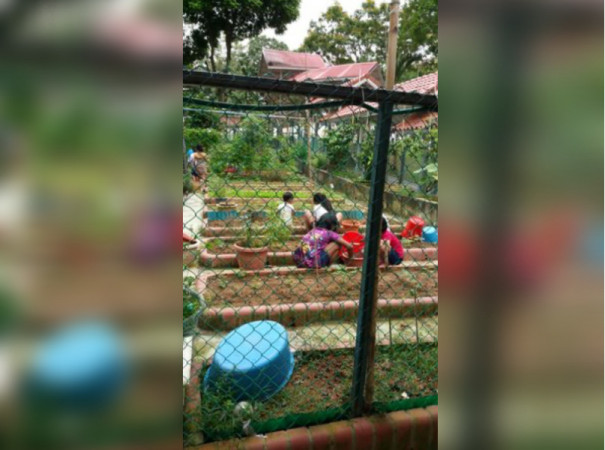
Just hearing that brought a smile to my face. Imagine: A neighbourhood that is so close-knit that everyone knows whose child is whose? I’ve never had that in my life. It also showed me just how strong a support system a neighbourhood can be.
By now, we had texted Sandy and arranged to meet her at Block 702, where she does most of her mini donation drives.
At the void deck, we noticed containers of snacks on a makeshift shelf next to the Residents’ Corner.
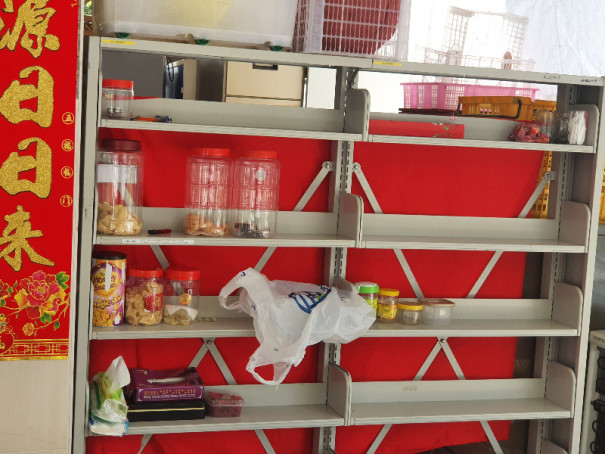
These half-full containers were just left out for anyone who had the munchies. And the Singaporean in me marvelled at the fact that they were left unattended and yet no one had stolen them!
I saw a resident walking by and on the spur of the moment, asked if he knew Sandy.
I wasn’t all that surprised when he said he did. Not only that, Syed Hamzah is one of the volunteers who help pack and distribute the items.
Settling into a seat next to us, Syed shared: “Whenever Sandy has things to give out, she will message our group of volunteers who will spread the news. Then anyone who needs the items can come here to collect it for themselves or have someone collect for their area.”
He added: “Thanks to Sandy, people can have necessities and also a place to make friends and help out.”
Greeting everyone by name
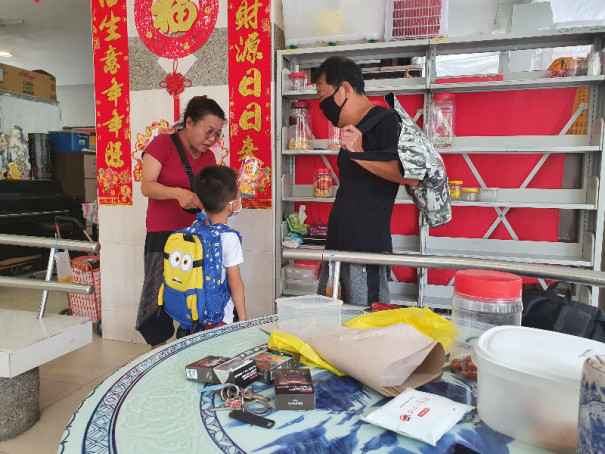
As we were talking to Syed, almost on cue, Sandy emerged from around the corner.
The 53-year-old told us: “I ask friends who run their own businesses to give me any unwanted things, foodstuff especially, from their shops. They know these things are going to needy people so they often donate additional items as well.”
We found out that Sandy runs a funeral tentage business with her husband and moved to the Bedok Reservoir neighbourhood ten years ago. She has been collecting and giving out items to residents since 2015.
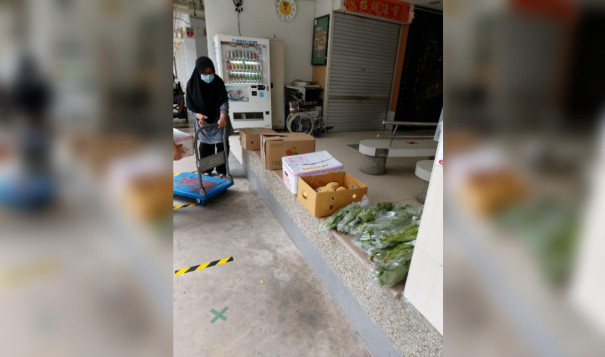
Being a business-owner allows her to set aside time to organise her events.
As we chatted, Sandy would greet every passer-by by name (she continued to do this during our entire time together), sometimes even stopping our conversation to tell them about the next giveaway – today, it was a batch of oranges that was arriving soon.
Sandy told us: “We prevent food wastage this way. Instead of throwing it away, we can give it to people who need it to survive and get by.”
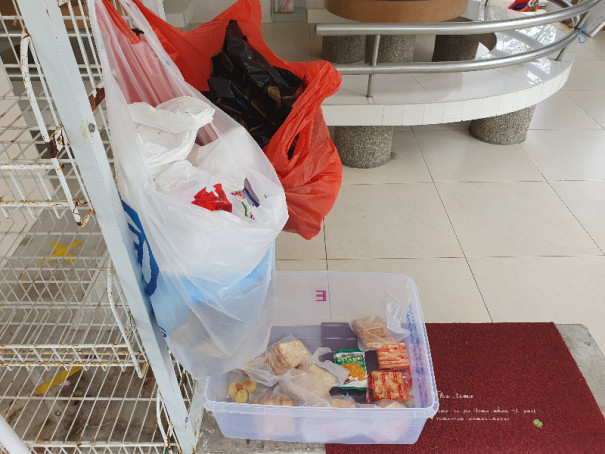
This spirit of generosity has sparked a reciprocity between neighbours, she explained. People who collected the free items started donating items of their own that they didn’t need, paying it forward and further strengthening the bond between neighbours.
“Donors are receivers and receivers are donors. People who need help also want to help others, so there is something for everyone.”
A community gathering spot
We found out that Block 702 isn’t just a location for giving out food and items. It was also a community gathering spot where neighbours could do activities together.
Before Covid-19, residents would regularly hold celebrations during festive holidays such as Chinese New Year, Hari Raya and Christmas.
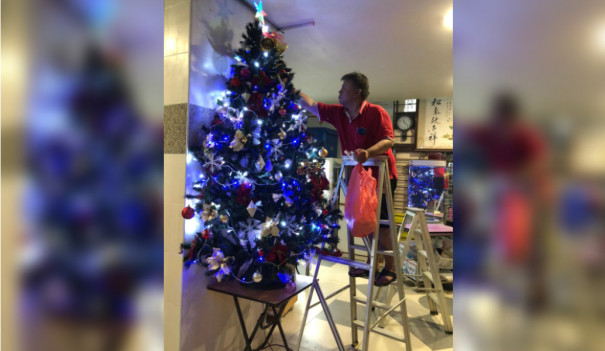
Sandy says: “Everyone contributes in their own way. We invite everyone to celebrate with us even if they are from different races or religions.”
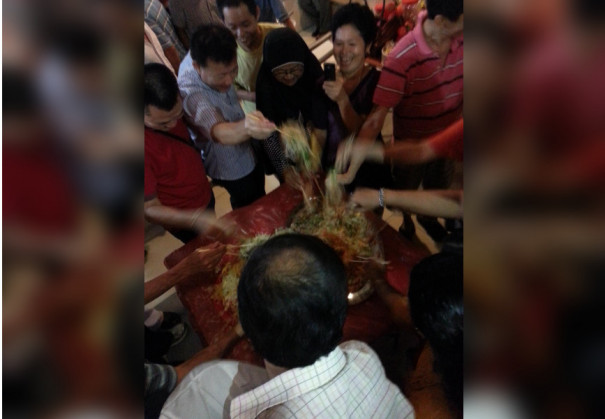
“And people also volunteer to bring their own decorations and chip in to cook for everyone. Different teams cook different kinds of food to suit all needs – such as Muslim food or vegetarian food – so everyone can eat together.”
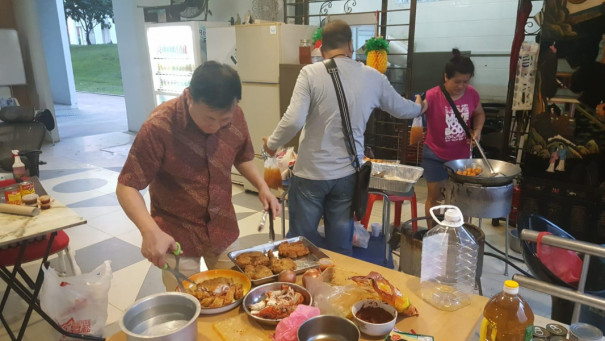
On top of celebrating events, the void deck often gets converted for people to carry out group activities, such as prayers for Muslim residents during Hari Raya.
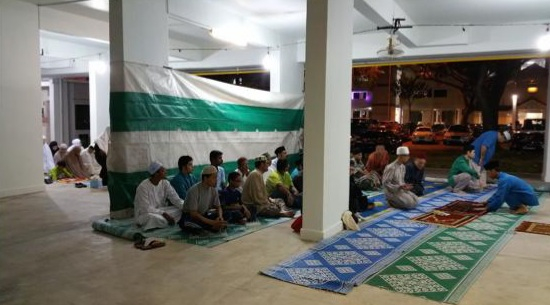
It’s not just during the religious festivals that the community comes together – people meet up on a daily basis too.
Sandy elaborated: “We give free tuition to the younger ones. The secondary school students would teach the primary school kids. We also help the elderly fill out their forms because some of them can’t see or read very well. So we explain the forms to them and help fill them out.”
The neighbourhood businesses often also chip in.
Sandy said: “One time, when many of the elderly residents had forms to fill out, the photocopier shop provided free photocopying services for the entire day!”
Kampung spirit in Singapore not without obstacles
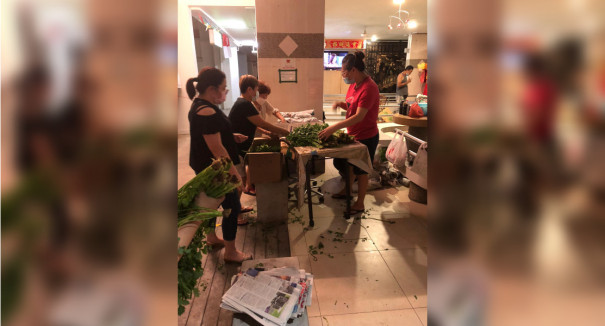
Building this sense of camaraderie was not easy at first.
Sandy said: “When I first moved here, it was very difficult to build trust with the elderly residents because many thought that people who offer help always want something in return.”
“They hear stories of old people getting taken advantage of so they guard themselves even more.”
She says that she gets angry when she hears of stories of people taking advantage of the elderly, like scamming them of their life savings.
The fact that the majority of the residents are elderly also increases the importance of what she does in the neighbourhood.
Other stories you might like

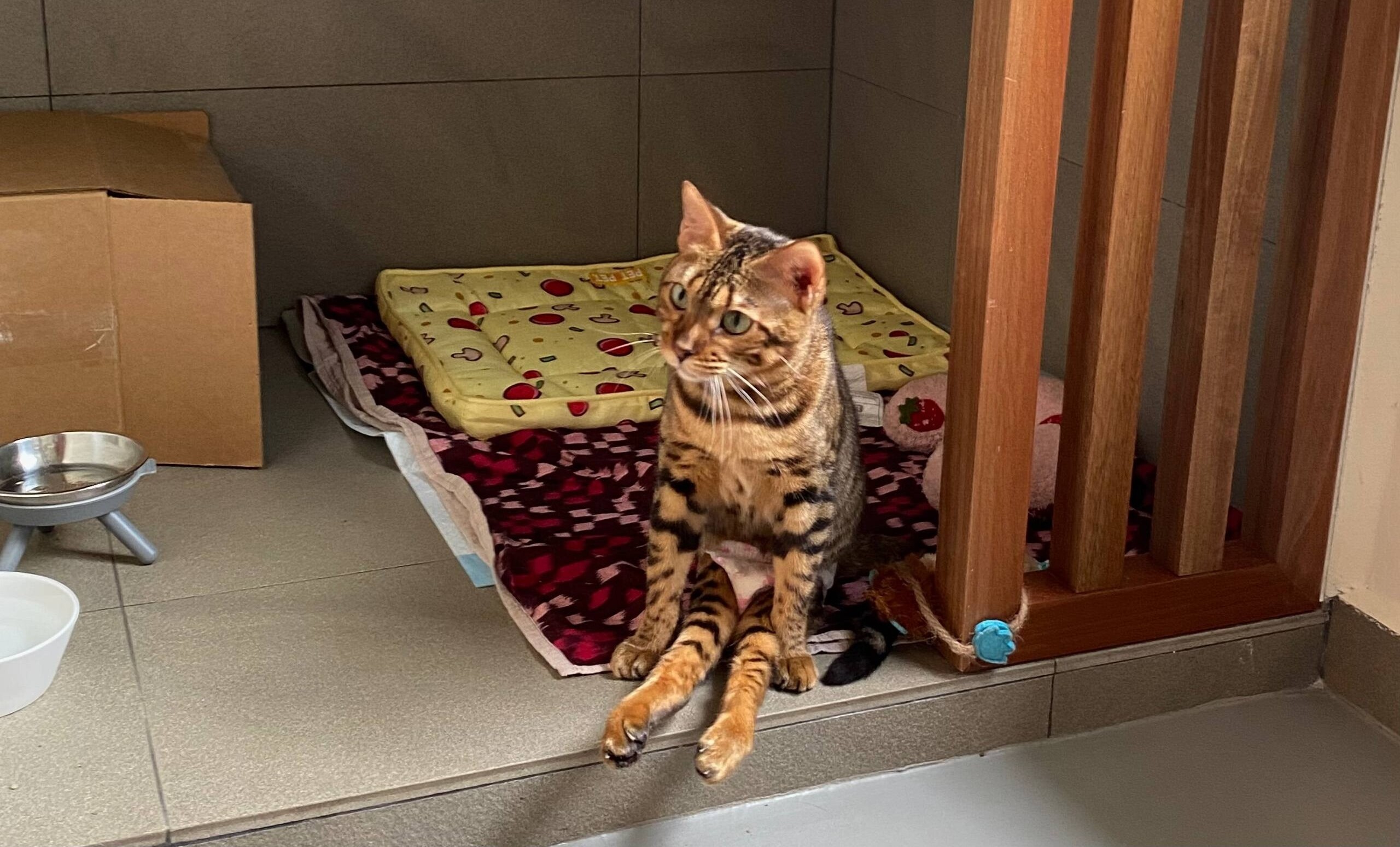

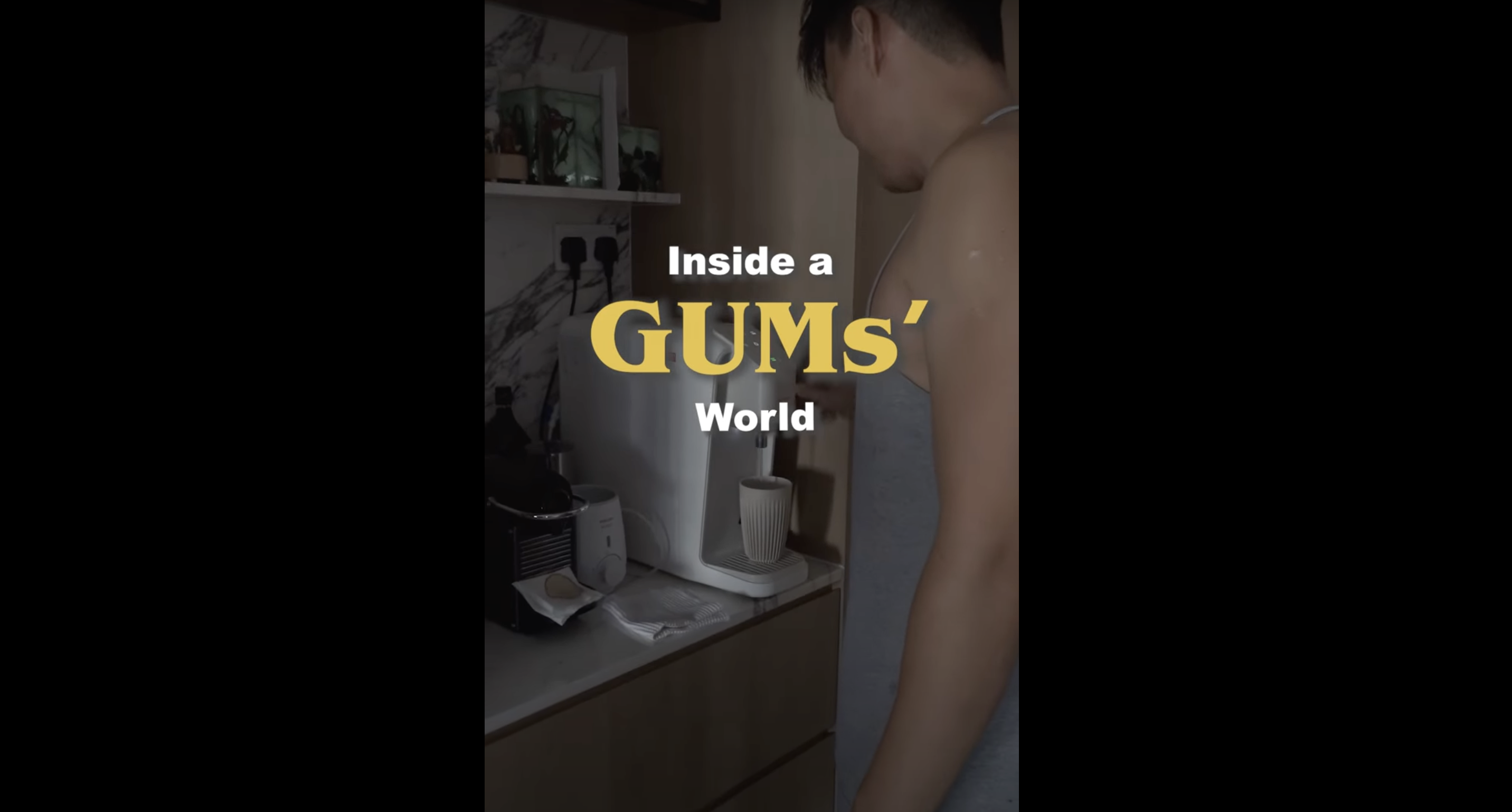
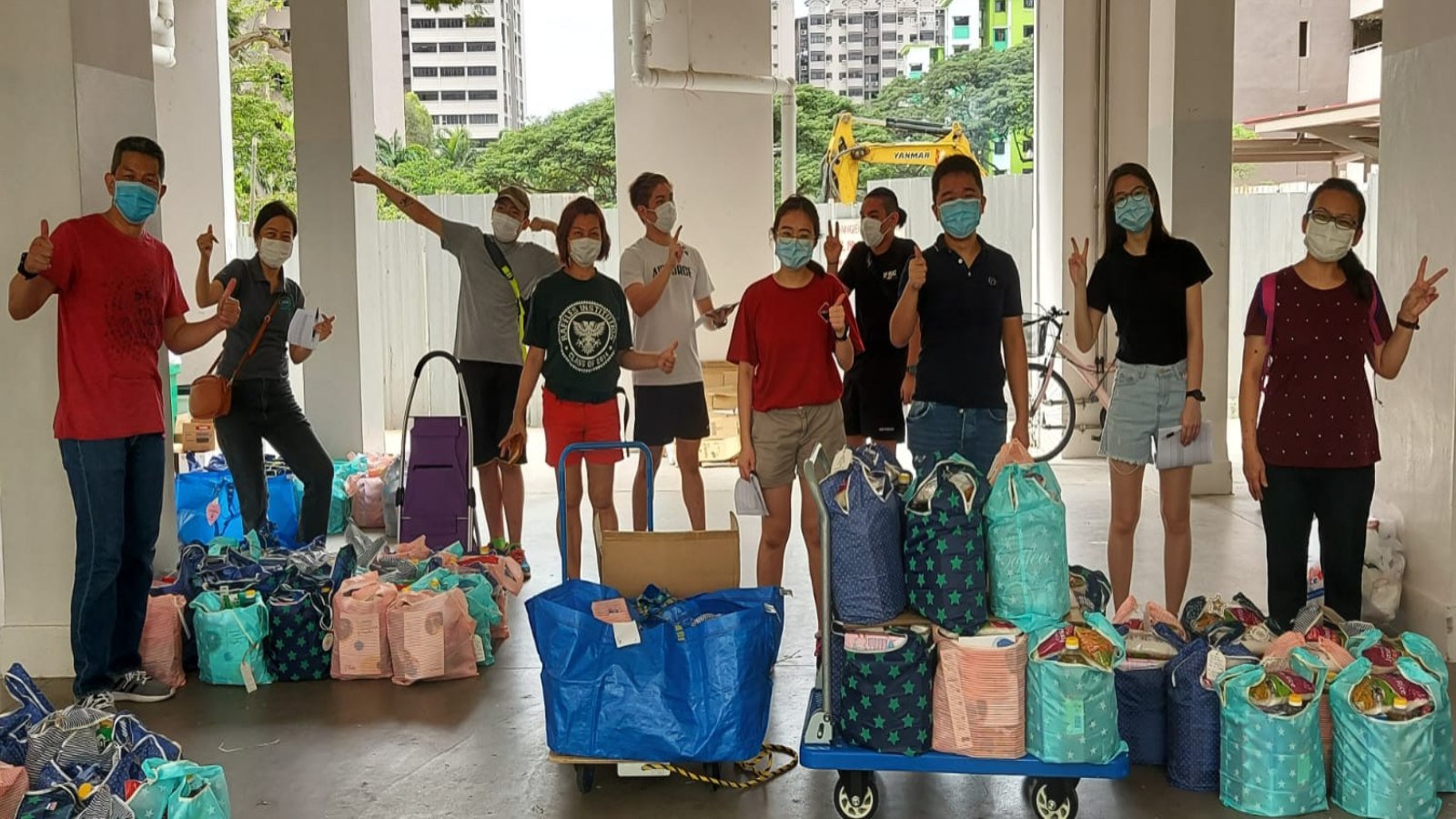
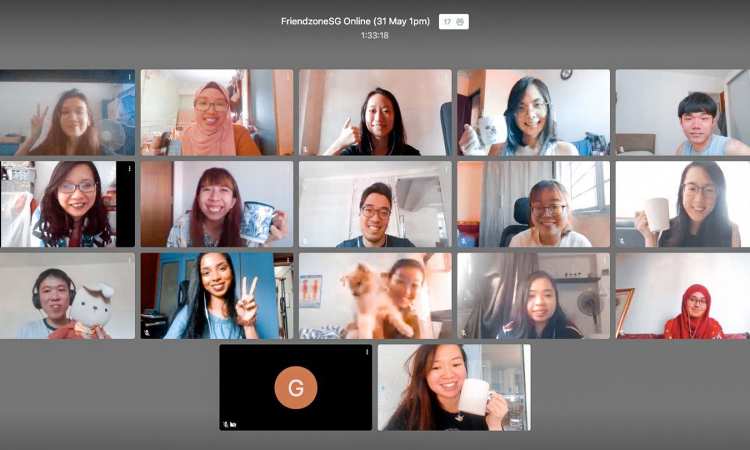
“Most of them have adult children who live elsewhere and they don’t always come to visit. Covid has made it even harder. So many of the elderly residents spend most of their time with their helpers without much to do.
“At least (with the events), they can get whatever necessities they need, participate in activities and even help pack goods to give out. They also chat with other people and make friends. This helps to keep them active physically and mentally,” Sandy said.
She also said that before Covid, everyone would come down to the void deck during distribution events. But after safe-distancing measures were implemented, residents now come in shifts or send representatives.
Giving back to the community
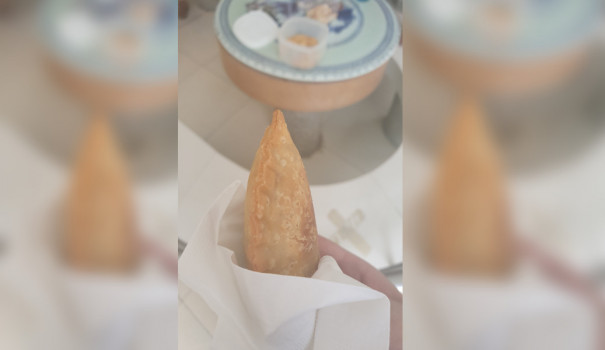
When we got back from lunch, we spotted more residents at the void deck chatting and laughing with one another. One of them offered her homemade curry puffs to us – they were delicious!
I tried to thank and talk to Rukisah, who had made the curry puffs but her English was not very good and my Bahasa was non-existent. Thankfully, another passer-by agreed to translate.
She told us that Rukisah had been retrenched from her previous job. As Covid made it difficult for her to find another job, she had nothing much to do at home. However, thanks to Sandy, she interacts more with others and has made friends while doing what she loves and giving back to the community.
“I love to cook. So whenever there are events here I always want to help cook food for everybody. It’s something I enjoy doing,” she told us.
Our translator, Asiah, told us with a wide smile: “Everyone is so happy here. We get to chat with each other and do things together. It’s a very nice place to be in.”
Experiencing kampung spirit for a day
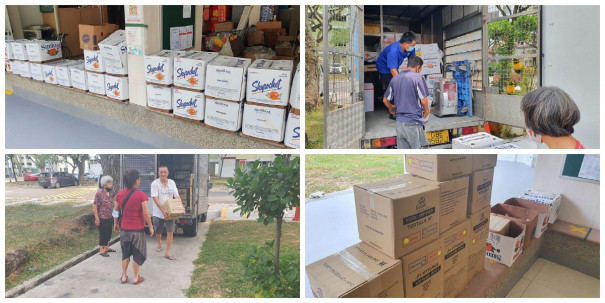
When the oranges arrived, with no prompting, the residents started unloading the boxes at the collection point. I joined in and despite the heavy work, everyone was smiling and chatting.
At the collection point, Sandy started giving out oranges. Everyone (including me) had some, not just residents. She even convinced a nearby group of construction workers to take some back with them.
After the interview, my colleague left but I stayed on at the void deck of Block 702. I was reluctant to leave the light-hearted camaraderie. I was finally experiencing the kampung spirit for the first time, and it was a good feeling.
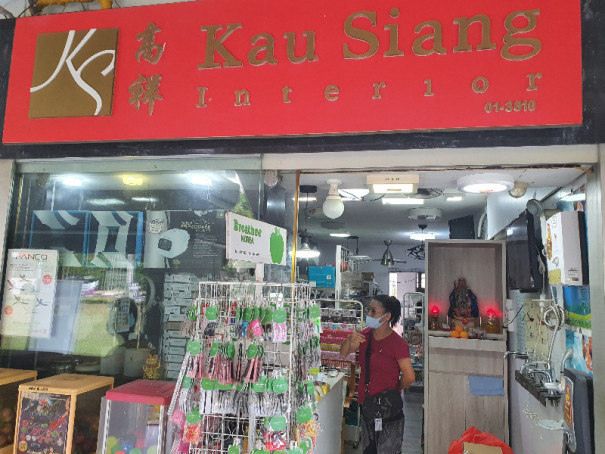
What struck me in my conversations with Sandy was how she insisted that it was the constant empathy and kindness of the residents that sustained the kampung-ness of the place. She only got the ball rolling, she said.
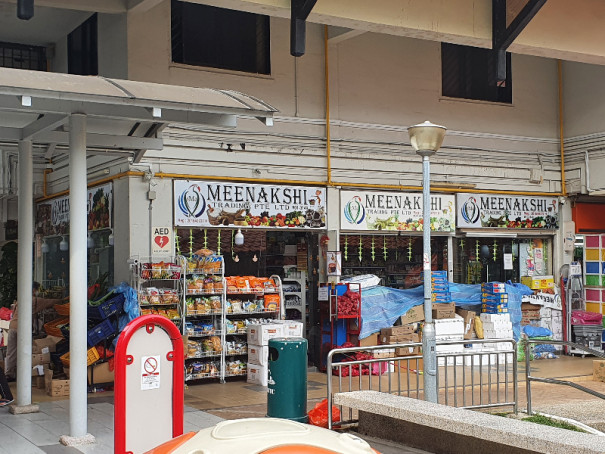
The more I talked to her, the clearer it became to me that, sugary as it may sound, this only works out of the goodness of people’s hearts. There is no set system or structure. No profit and no strings attached. It’s simply a neighbourhood coming together to help each other.
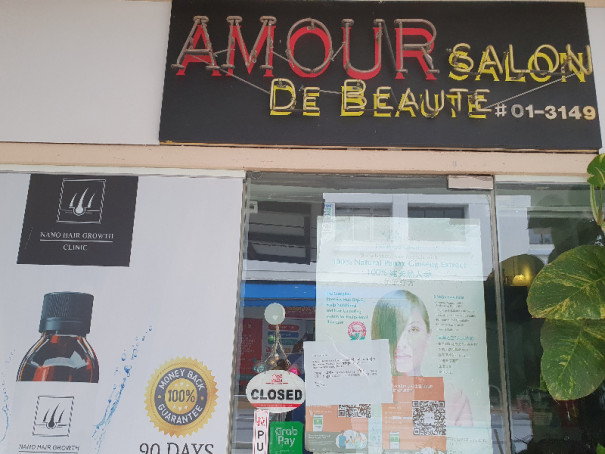
One of the most wholesome neighbourhoods I’ve been in
The half-day experience was truly an eye-opener for me. It showed me that even though we don’t live in villages any more, the kampung spirit can still thrive in today’s society.
As I bid goodbye to Sandy, she said that I was always welcome to visit.
In a world where people stay glued to their devices instead of interacting with their neighbours, the kampung spirit is alive and well in Bedok Reservoir and it continues to live on in Sandy Goh and the people around her.
If you like what you read, follow us on Twitter and Google News to get the latest updates.
